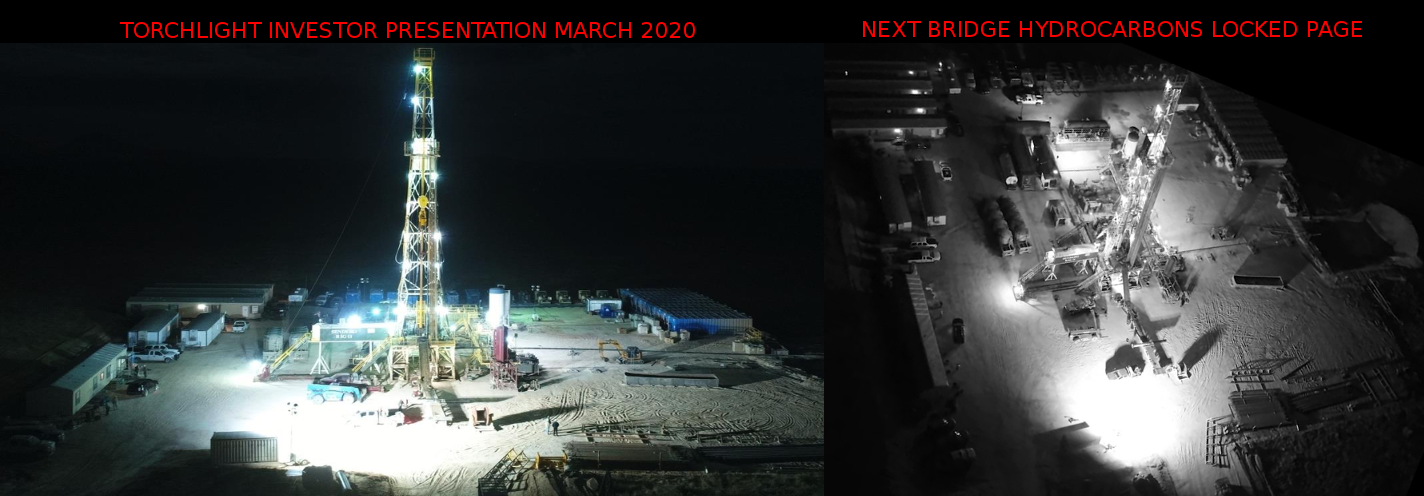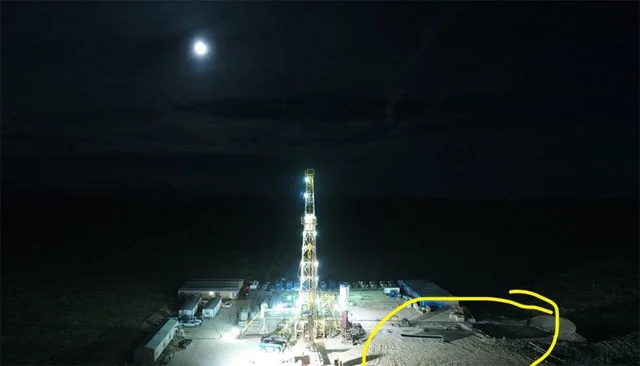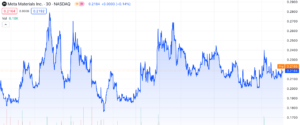Media & Technology
The Inside Scoop on Health Discovery Corporation (OTCMKTS: HDVY)
Published
5 years agoon
By
Boe RimesHealth Discovery Corporation (OTCMKTS: HDVY) is spiking up the charts on a significant surge of volume in recent days after the Company announced it has filed an infringement lawsuit against Intel Corporation pertaining to HDC ’s Support Vector Machine-Recursive Feature Elimination methods (“SVM-RFE”) patents. Health Discovery has attempted numerous times to avoid litigation with Intel regarding this dispute. Unfortunately, those efforts were unsuccessful and as a result this infringement suit is necessary according to HDC CEO George H. McGovern, III.
Patent stocks are even more explosive than biotechs and HDVY has been no exception spiking from under a penny to highs over $0.20 per share in February of last year after the United States Patent and Trademark Office (“USPTO”) ruled in favor of HDC on the SVM-RFE Patents in the Interference proceeding between HDC and Intel. HDC has retained the firm of Dunlap, Bennett & Ludwig to represent the Company which has been filed in the United States District Court for the Western District of Texas, Waco Division where Intel has operations.
Health Discovery Corporation (OTCMKTS: HDVY) is a machine learning company that uses advanced mathematical techniques to analyze large amounts of data to uncover patterns that might otherwise be undetectable. The Company operates primarily in the field of molecular diagnostics where such tools are critical to scientific discovery. The terms artificial intelligence and machine learning are sometimes used to describe pattern recognition tools.
HDC’s mission is to use its patents, intellectual prowess, and clinical partnerships principally to identify patterns that can advance the science of medicine, as well as to advance the effective use of its technology in other diverse business disciplines, including the high-tech, financial, and healthcare technology markets.
The Companies historical foundation lies in the molecular diagnostics field where it haas made a number of discoveries that may play a role in developing more personalized approaches to the diagnosis and treatment of certain diseases. However, its Support Vector Machines (“SVM”) assets in particular have broad applicability in many other fields. Intelligently applied, HDC’s pattern recognition technology can be a portal between enormous amounts of otherwise undecipherable data and truly meaningful discovery.
HDC principal asset is its intellectual property, which includes advanced mathematical algorithms called SVM, as well as biomarkers that it discovered by applying its SVM techniques to complex genetic and proteomic data. HDI intellectual property is protected by 31 patents that have been issued or are currently pending around the world.
To Find out the inside Scoop on HDVY Subscribe to Microcapdaily.com Right Now by entering your Email in the box below
HDC is surging higher after the Company announced it has filed an infringement lawsuit against Intel Corporation. This infringement suit pertains to Health Discovery’s Support Vector Machine-Recursive Feature Elimination methods (“SVM-RFE”) patents.
In February 2019 HDVY skyrocketed from under a penny to highs over $0.20 per share after the United States Patent and Trademark Office (“USPTO”) ruled in favor of Health Discovery on the SVM-RFE Patents in the Interference proceeding between HDC and Intel. The Patent Trial and Appeal Board (“PTAB”) of the USPTO issued its decision, finding that Health Discovery is entitled to claim exclusive rights to the SVM-RFE technology as set forth in the patent application that was filed to provoke the Interference. The decision ordered Intel’s Patent No. 7,685,077 to be cancelled. The decision also dismissed Intel’s motions challenging the validity of Health Discovery’s pending claims and issued patents covering SVM-RFE.
In September 2019, the USPTO issued U.S. Patent No. 10,402,685 (“SVM-RFE Patent”) for Health Discovery’s patent application covering SVM-RFE. Health Discovery now owns four patents in the United States, owns five international patents covering the SVM-RFE method, and is the sole owner of all patents related to SVM-RFE. Furthermore, the USPTO granted a Patent Term Adjustment (“PTA”) to the SVM-RFE Patent. The PTA is 1,785 days (almost 5 years), which, added to the normal 20-year-from-filing patent term, extends this patent term to June 7, 2025.
George H. McGovern, III, HDC’s Chairman and CEO, noted, “Health Discovery is taking the necessary steps to protect its sole ownership of SVM-RFE patents against infringement.”
Very cheap shares to buy at .06 should be trading over .70+ with lawsuithttps://t.co/KFFdV063uP
— Pro_Stock_Trader (@_ProStockTrader) July 24, 2020
We have a Monster Pick Coming. Subscribe Right Now!
Currently running up the charts HDVY is an exciting story developing in small caps; pink current, the Company has over $2 million in the treasury and its most valuable asset i its intellectual property, which includes advanced mathematical algorithms called SVM, as well as biomarkers that it discovered by applying its SVM techniques to complex genetic and proteomic data. HDI intellectual property is protected by 31 patents that have been issued or are currently pending around the world. The Company scored a resounding win in February 2019 when the USPTO ruled in favor of HDC on the SVM-RFE Patents in the Interference proceeding between HDC and Intel. Now that HDC has filed a lawsuit things could start popping for HDVY. Intel has paid out big money to settle patent-infringement lawsuit’s in the past recently paying $250 million over five years to Transmeta Corp. to settle a patent-infringement lawsuit over chip designs and power management technology Patent stocks are even more explosive than biotechs, we have covered another play in the space NLST as it has risen from pennies to highs near $1. We will be updating on HDVY when more details emerge so make sure you are subscribed to Microcapdaily so you know what’s going on with HDVY.
Subscribe to Our 100% Free Penny Stock Newsletter. We Have Something Big Coming!
Disclosure: we hold no position in HDVY either long or short and we have not been compensated for this article.
Featured
Meta Materials (NASDAQ: MMAT): More Due Diligence and Exploring Latest Developments
Published
2 years agoon
January 16, 2024
Meta Materials (NASDAQ: MMAT) witnessed a significant uptick in trading activity on January 16th, 2024, resulting in a notable 20% increase in its stock value by market close. Intrigued by this surge, we explored various sources, including press releases, SEC filings, and social media, to identify the catalyst behind this sudden gain.
Unexpectedly our research revealed no recent material releases. Instead, the surge seems tied to an announcement from a few days ago that didn’t grab much attention at first. As time passed, it started generating more buzz but there’s still a lot more to dig into and a number of ideas to consider for today’s rally.
If you haven’t caught up on our previous analyses of MMAT, you can find the overview here. In this report, we aim to explore the cause-and-effect dynamics of recent events, offering insights that might illuminate expectations for Meta Materials in the near future.
Background:
If you’re new to MMAT or haven’t been a long-time follower, let’s kick things off with a quick intro to the company.
Meta Materials stands at the forefront of advanced materials and nanotechnology. Their focus is on pioneering novel products and technologies utilizing sustainable and innovative scientific approaches. The interesting part is their advanced materials have the transformative power to enhance a variety of common products, infusing them with heightened intelligence and sustainability.
Leveraging its technology platforms, they’re capable of empowering global brands in creating cutting-edge products that elevate overall performance.
Their technology has application across multiple industries including aerospace and defense, consumer electronics, 5G communications, batteries, authentication, automotive, and clean energy. Their agreement with Panasonic is certainly a great start to empowering their growth in one of many verticals. Overall the TAM is ~$32B and with current growth rates, it’ll increase to a whopping ~$61B by 2026.
MMAT’s goal is to shape a smarter and more sustainable world. If you look through their presentation, you can continue to evaluate the many ways their technology transforms everyday lives. We highly suggest you take a look.
Additional Resources:
- @LauraLoomer’s video on MMAT
- @metaheadj’s post on X, displaying Rob Stone‘s response update for an investor
Subscribe to Microcapdaily.com Right Now by entering your Email in the box below.
Subscribe to Our 100% Free Penny Stock Newsletter. We Have Something Big Coming!
What Happened:
So, MMAT issued a press release on January 11th, 2024, announcing a proposed settlement with the Securities and Exchange Commission (SEC) concerning an investigation related to the Torchlight Energy Resources, Inc. and Metamaterial Inc. merger.
According to the release, The company has extended a settlement offer (Proposed SEC Settlement) to the SEC’s Division of Enforcement. This proposed settlement aims to address concerns regarding antifraud, reporting, books and records, and internal accounting control provisions of securities laws. It is important to note that the Proposed SEC Settlement is contingent on approval by the SEC Commissioners, and the company cannot predict the approval timeline.
If accepted, the Proposed SEC Settlement would involve the SEC entering a cease-and-desist order and the company paying a civil money penalty of $1 million over a one-year period in four installments. Notably, the company would neither admit nor deny the findings outlined in the Order.
The company’s board of directors and management team view the Proposed SEC Settlement as beneficial for shareholders. If approved, it is expected to remove uncertainty surrounding the investigation, enabling the company to focus on advancing its business objectives.
So What:
If you’ve just read through the announcement and are confused, you’re not alone. It appears that many investors may have mis-read the press release, thinking that the SEC was being punished and MMAT was reaching a settlement agreement, but it appears to be the other way around.
In the event of approval, the company is obligated to pay a civil money penalty of $1 million. This penalty would be paid in four installments over the course of one year, following an agreed-upon payment plan. However, the PR also notes that the company cannot predict with certainty whether or when the Proposed SEC Settlement will even be approved by the SEC Commissioners.
According to another user on X, @AShortSqueeze, MMAT’s initial analysis has potentially revealed the motherload of counterfeit shares.
But if you scroll through the comments, you’ll see other users pointing out that this information is actually old news. This is just one of many widely circulated posts that might have been misunderstood.
Significant Coverage:
Another theory suggests that a notable influencer in the financial space, @MoonMarket_, has set their sights on the company and is conducting additional due diligence. With a substantial following of almost 75K users, the influencer’s involvement could have contributed to a significant fluctuation in today’s trading session. It’s important to recognize that X is packed with plenty of financial influencers, and blindly following their moves can be risky. Many are involved in day trades, momentum trading, or at least contemplating such strategies.
Conclusion:
The buzz around MMAT today seems fuelled by a mix of misrepresented themes and recycled news, creating the illusion of fresh, imminent developments.
As per usual, the magnitude of MMAT’s technology and potential integrations across various verticals continues to create a roar of excitement. On another front, we’re also continuing to see speculation about a short squeeze due to substantial amounts of counterfeit shares.
For now, patience is key and we suggest closely monitoring developments. MMAT especially tends to be quite volatile.
Disclosure: We have not been compensated for this article/video. MicroCap Daily is not an investment advisor; this article/video does not provide investment advice. Always do your research, make your own investment decisions, or consult with your nearest financial advisor. This article/video is not a solicitation or recommendation to buy, sell, or hold securities. This article/video is our opinion, is meant for informational and educational purposes only, and does not provide investment advice. Past performance is not indicative of future performance.
Picture by StartupStockPhotos from Pixabay
Featured
Meta Materials’ (NASDAQ:MMAT) Journey: Legal Hurdles, Innovation and Future Potential
Published
2 years agoon
October 13, 2023
Meta Materials (NASDAQ: MMAT) has been a hot topic as of late, with investors all over the web talking about a potential resurgence. If we rewind to late 2020 and glance at their stock chart, we witness an impressive surge from ~$0.54 to a peak of $13.52, an astonishing 2400% gain within’ the span of a few months. If you’ve been following our articles lately, you’ll notice a similar kind of performance from Tempest Therapeutics’ (NASDAQ: TPST). This is of course a rare event, but there’s a noteworthy angle to consider. While TPST’s initial data release triggered a significant surge, what propelled it further appears to be its “Poison pill” strategy. Recent tweets from MMAT’s CEO suggest a similar strategy is in the works. Could MMAT experience a colossal gain reminiscent of 2021 or even rival TPST’s performance? Let’s delve into Meta Materials, its recent developments, and potential prospects to uncover what’s in store.
Background:
Meta Materials stands at the forefront of advanced materials and nanotechnology. Their focus is on pioneering novel products and technologies utilizing sustainable and innovative scientific approaches. The interesting part is their advanced materials have the transformative power to enhance common products, infusing them with heightened intelligence and sustainability. Leveraging its technology platforms, they’re capable of empowering global brands in creating cutting-edge products that elevate overall performance. Their technology has application across multiple industries including aerospace and defense, consumer electronics, 5G communications, batteries, authentication, automotive, and clean energy. Overall, that’s ~$32B TAM and with current growth rates, it’ll increase to a whopping ~$61B TAM by 2026. Their goal is to shape a smarter and more sustainable world. If you look through their presentation, there are a number of ways their technology can transform our everyday lives. We highly suggest you take a look.
Subscribe to Microcapdaily.com Right Now by entering your Email in the box below.
Subscribe to Our 100% Free Penny Stock Newsletter. We Have Something Big Coming!
Lawsuits:
You’ll notice MMAT has faced a challenging year as its valuation took a hit following the initiation of two separate class action lawsuits that stemmed from a short-seller report and statements related to Meta’s business combination with Torchlight Energy Resources.
We’ll keep this section short and focus on the accusations related to the business combination. If you’d like more information on the short seller lawsuit, click here.
Long story short, a shareholder filed a class action lawsuit against Meta on behalf of individuals who acquired the company’s publicly traded securities between September 20, 2020, and December 14, 2021. The lawsuit alleged violations of the Securities Exchange Act of 1934. The complaint outlined that Meta Materials, initially known as Torchlight Energy Resources, Inc., exaggerated its business connections, product capabilities, and pricing during its merger with Metamaterial Inc. The filing highlighted a subsequent SEC subpoena, leading to a share price drop. Additionally, a critical report by Kerrisdale Capital triggered another significant share price decline, further impacting investors.
However 11 days ago on October 2nd, 2023, there were significant positive developments regarding this situation. It appears that MMAT will no longer have this legal burden to bear. The lawsuits were entirely dropped, and the court ruled to dismiss all the allegations made against them. As you might of noticed, the initial announcement earlier this year led to a huge selloff. At the current moment, it’s trading at extremely low levels and many online believe there’s substantial upside.
Poison Pill:
As we previously mentioned, it appears the CEO, George Palikaras is working on a poison pill of his own. After Tempest Therapeutics (NASDAQ: TPST) released their latest data it brought ~2400% gain, but their poison pill managed to push that gain even further to ~4000%. If you’re not familiar with what a poison pill is, allow us to explain below.
A poison pill is a defensive strategy used by a company’s management to deter or prevent hostile takeovers or acquisitions by another entity. The term “poison pill” implies that it is intended to be unattractive or undesirable for the acquiring entity.
Typically, a poison pill involves issuing new shares or other financial instruments to existing shareholders, or allowing them to purchase shares at a significant discount, in the event that an outside entity acquires a certain percentage of the company’s shares. This dilutes the ownership and voting power of the acquiring entity, making the takeover more difficult or costly.
The objective is to make the acquisition financially less appealing or more difficult, encouraging potential acquirers to negotiate with the company’s board of directors instead of pursuing a hostile takeover.
Palikara just recently tweeted, “Revenue, strategic partnerships, cost efficiencies, hiring & paying for performance, non-dilutive capital, poison pill, relentless work, Revenue… Plenty of time 2 get in compliance, but our bar is set a lot higher than that.”
If you look through some of MMAT’s latest releases, you’ll notice they’ve announced various forms of funding, more recently they closed a financing for 50M with Lincoln Park Capital Fund, LLC.
Subscribe to Microcapdaily.com Right Now by entering your Email in the box below.
Subscribe to Our 100% Free Penny Stock Newsletter. We Have Something Big Coming!
Potential Application & Outlook:
Pay special attention to this section, as we’ll be spotlighting potential applications of MMAT’s technology and where they’re at in the commercialization process. Many believe the application alone could hold substantial returns for long-term shareholders.
One user from Twitter, @Seashellpants, has shared a video that outlines in great detail MMAT’s agreement with the Simon Fraser university, one of the top universities in Canada and worldwide.
In this video, we’ll catch a glimpse of how the R&D process is going so far and potential application across various verticals. You’ll need to be cautious, as this video may cause “Heavy breathing”.
We’ll provide a brief summary below, but don’t miss out on the hyperlink above. It’s not only entertaining, but also packed with valuable insights.
Breakdown of the Video:
Just over 2 years ago on October 5th, 2021 MMAT acquired Nanotech Security Corp. which is now considered a subsidiary of MMAT. If we delve into MMAT’s 10Q from May 12th, 2023, there are multiple updates on how their research is going with the Simon Fraser University. Within this 10Q we also find an interview with the CTO, Clint Landrock, who unveils numerous case studies related to their nano-manufacturing commercialization efforts.
First and foremost, MMAT has been granted a parent-patent that includes it’s claim for nano-hole structures and applications for those features in the security and authentication industry. It also includes claims for the use of those nano-scale structures that are smaller than a wavelength of light in conjunction with printable electronic components, which would include electronic displays, batteries and solar cells.
Landrock states,”It seems like it could be used for a range of possible markets, including games and interactive displays for consumer products”. He even touches on how these displays could be used for specific light wave optical guides used in medical programs for sensing bacteria and disease or for drug application.
If we delve deeper, the initial purpose of this technology was to enhance solar panels by maximizing electron production, leading to more efficient and durable batteries. Considering their nano-scale structures are tinier than a wavelength of light, you can envision the implications for battery performance. Especially in the context of the ongoing global shift towards Electric Vehicles (EVs), this presents a significant opportunity to integrate such a groundbreaking technology.
However, given the immense demand for this technology across various applications, achieving scalability is critical, necessitating a roll-to-roll manufacturing approach to handle the high volume needed. Typically, scaling up can pose a significant hurdle, but what amplifies the excitement here is Landrock’s affirmation that they have effectively demonstrated, in collaboration with a third party, the ability to produce and operate their technology using high-speed roll-to-roll casting machines. The outcomes were remarkably positive with 100% through-put yield. Which means 100% of the images produced could be used for commercial purposes.
Another common barrier to entry is the costs associated with scaling a new technology. To make things even better, their technology also aligns with global initiative to be more green. Landrock states, “Also, this is a true green technology that will not harm the environment, costs less to produce than the current technology and provides far improved security for authentication requirements”.
Subscribe to Microcapdaily.com Right Now by entering your Email in the box below.
Subscribe to Our 100% Free Penny Stock Newsletter. We Have Something Big Coming!
Agreement with Panasonic:
On September 29th, 2023 MMAT teamed up with Panasonic Industry Co. (An operating company in charge of device business within the Panasonic Group) to advance transparent conductive materials. This collaboration aims to enhance the supply of NANOWEB® films, which would benefit sectors like automotive and consumer electronics, transparent film antennas, heaters, and electromagnetic shielding.
The demand for ultra-low sheet resistance and high optical performance is increasing, particularly for flexible solar cells and smart windows. According to BCC Research, the global transparent conductive films market is projected to reach $7.6 billion by 2025 from $4.9 billion in 2020, growing at a CAGR of 9.2%.
George Palikaras, CEO of META, highlighted the importance of this collaboration, emphasizing their shared goal to advance transparent conductive materials. Panasonic Industry has a track record of mass-producing quality transparent conductive films, making them a strategic partner for META.
Yuichi Yoshikawa, Director of Touch Solutions Business Unit at Panasonic Industry, expressed excitement about the collaboration, foreseeing it providing advanced solutions and creating new possibilities across various applications.
This collaboration merges NANOWEB® metal mesh designs by META with Panasonic Industry’s cutting-edge process technology, aiming to set new industry standards. They will showcase their collaborative solutions at CEATEC 2023 which goes from Oct 17 – Oct 20 to demonstrate the potential applications of this partnership.
This agreement holds significant weight. Keep a vigilant watch, the event is around the corner and they’re expecting ~200,000 attendees. A collaboration with a well-established and reputable name like Panasonic certainly changes the landscape, and could bring notable shifts for the company in the near future.
Conclusion:
In essence, MMAT stands at a pivotal moment. With the resolution of lawsuits, it appears things could be looking up. Coupled with their recent strategic maneuvers and advancements in commercialization, MMAT certainly holds promise. Could they potentially see a significant valuation upswing in the near term? The consensus among thousands online is yes. Considering the innovation and potential impact, MMAT is undeniably a company worth vigilant monitoring in the months ahead.
We will update you on MMAT when more details emerge, subscribe to Microcapdaily to follow along!
Subscribe to Our 100% Free Penny Stock Newsletter. We Have Something Big Coming!
Disclosure: We have not been compensated for this article/video. MicroCap Daily is not an investment advisor; this article/video does not provide investment advice. Always do your research, make your own investment decisions, or consult with your nearest financial advisor. This article/video is not a solicitation or recommendation to buy, sell, or hold securities. This article/video is our opinion, is meant for informational and educational purposes only, and does not provide investment advice. Past performance is not indicative of future performance.
Featured
Clean Vision Corporation (OTC: CLNV): Understanding the 180% Surge and Key Insights
Published
2 years agoon
October 6, 2023
Shares of Clean Vision Corporation (OTC: CLNV) have seen an uptrend of 180% since September 18th, 2023. This emerging developer of sustainable clean technology hasn’t had a press release since September 7th, 2023. The company’s seen substantial growth without targeted press releases to update investors. However if you look closer, a deeper narrative emerges. We found a number of SEC filings and there also appears to be a number of notable Twitter users talking about the company, believing it has substantial prospects near term. Before we move forward, let’s pause to gain a deeper understanding of the landscape surrounding Clean Vision.
Background:
Clean Vision is led by Dan Bates, and their goal is to tackle the global plastic waste crisis head-on. Their wholly owned subsidiary, Clean Seas, has developed the Plastic Conversion Network (PCN), a groundbreaking technology aimed at diverting millions of tons of waste plastic from landfills, incineration, and oceans. The PCN converts this plastic feedstock into clean fuels and green hydrogen, significantly reducing reliance on fossil fuels and lowering the carbon footprint.
For a 2 minute overview on the company, we found a great video that CLNV’s subsidiary put together just recently. Feel free to follow this link to watch.
Subscribe to Microcapdaily.com Right Now by entering your Email in the box below.
Subscribe to Our 100% Free Penny Stock Newsletter. We Have Something Big Coming!
Clean Seas utilizes proven pyrolysis technology to produce environmentally friendly products, which are sold to multinational petrochemical companies, driving the circular plastic economy. Operational PCN facilities are already in place in Morocco and India, with additional conversion facilities in development across West Virginia, Arizona, and Southeast Asia. Long-term feedstock supply agreements exceeding one million tons of waste plastic annually have been secured at no cost.
Furthermore, the company aligns with ESG investment criteria and adheres to five United Nations Sustainable Development Goals (SDGs). Backed by a seasoned management team with extensive experience in sustainability, international development, and finance, Clean Vision is poised to be a key player in the clean energy economy. They invite collaboration to make a significant impact on the global waste plastic problem, striving for a cleaner environment for future generations.
No Press Releases:
Often with OTC companies, it’s common that updates within the company aren’t always accompanied by press releases. If you can’t find press releases, it’s a good practice to search for SEC filings to ensure you haven’t overlooked any important information. There are a number of SEC filings to keep in mind that can be found on CLNV’s IR portal of their website. If you can’t find information on a public issuers website, you can also find anything you need here.
S-1 Filing:
There were a number of filings from August 31, 2023 to October 3rd, 2023 which were mainly related to their S-1 filing. This means the company will likely be up-listing to the NASDAQ. For those that don’t know what this filing is, here’s a brief description:
The S-1 registration statement is a comprehensive document that includes detailed information about the company, its business operations, financials, risks, management team, and the proposed terms of the public offering. It’s a crucial step in the process of conducting an initial public offering (IPO) and making shares available for public trading on major exchanges such as NASDAQ or the New York Stock Exchange (NYSE).
A S-1 registration document is often lengthy and complex, making it challenging for everyday retail investors to grasp. To assist in understanding, we’ve broken down and simplified the initial page of CLNV’s S-1 for you:
CLNV S-1 Filing:
In essence their filing is saying that they are selling a large number of company shares (820,598,246 shares) owned by different people. These shares are part of Clean Vision Corporation, a company based in Nevada.
The people who own these shares can sell them at different times based on certain agreements they had with the company. The agreements are related to three specific dates and are linked to previous investments made by these shareholders.
May Purchase Agreement: This allows the sale of up to 269,042,604 shares based on an investment deal made on May 26, 2023.
February Purchase Agreement: This allows the sale of up to 454,166,752 shares based on an investment deal made on February 17, 2023.
August Purchase Agreement: This allows the sale of up to 97,388,890 shares based on an investment deal made on July 31, 2023.
The company, Clean Vision Corporation, won’t directly make money from the sale of these shares. But if the people who buy these shares decide to use certain options to get more shares, then the company will receive some money. The people selling these shares will handle the costs associated with selling them, like commissions and discounts. The company will handle the paperwork costs associated with registering these shares for sale.
8-K Filing:
It’s also important to note that the company filed an 8-K on October 3rd, 2023 mentioning that on September 26, 2023, Clean Vision Corporation made a deal with an investor. The investor agreed to buy 10,000,000 shares of the company’s common stock for a total of $198,000. The agreement was signed on that day but didn’t take effect until the investor paid the money on September 28, 2023.
As per this deal, the company sold these 10,000,000 shares to the investor at a price of $0.0198 per share. Additionally, the investor received 5,000,000 more shares, but these have restrictions on their sale. The company also has to register these 10,000,000 shares with the U.S. Securities and Exchange Commission within 45 days from the signing date, allowing the investor to sell them in the future.
Twitter Posts:
While exploring online discussions, we found Twitter users @FrankieBstock, @realsheepwolf, and @borders_LLC all showing enthusiasm for Clean Vision’s future potential. Although it’s important to remember that their views aren’t financial advice, it’s encouraging to see how CLNV’s journey has progressed since their initial thoughts on the company.
@realsheepwolf put things into perspective in a simple, comprehensive format for investors to see key takeaways.
“HUGE THINGS HAPPENINGS
✨non-dilutive financing
✨massive revenue growth
✨Morocco India operational
✨WV operational Q-1 2024
✨Arizona operational Q2-Q3 2024
✨Michigan, Mass., Puerto Rico moving toward definitive agreements.
✨Uplisting to NASDAQ”
Following the mentioned individuals, the video showcasing the company’s story above has been widely shared by @FrankieBstock and @borders_LLC.
As the company experiences a surge in daily trading activity another larger user jumped in on the action and took note of the company – expressing surprise at the remarkable increase in trading volume. Specifically, on October 4th, 2023, CLNV achieved a trading volume that equaled nearly $450,000 worth. This is quite significant, especially considering a singular share is being traded for a mere $0.05.
Conclusion:
Clean Vision’s story has garnered significant attention of late, suggesting the possibility of broader recognition among retail traders. It may only be a matter of time before various investment communities direct their focus towards the company. Notably, certain influential users on Twitter, some with a substantial following nearing 20,000 people, are actively discussing the company, adding to its visibility.
However it’s important to note that consistent with their nature, these stocks demonstrate high volatility, carrying the inherent risk of potential loss of your entire investment. Yet, for some, the allure lies in the thrill of potentially substantial returns, akin to the potential behind the roll of dice at a casino.
We will update you on CLNV when more details emerge, subscribe to Microcapdaily to follow along!
Subscribe to Our 100% Free Penny Stock Newsletter. We Have Something Big Coming!
Disclosure: We have not been compensated for this article/video. MicroCap Daily is not an investment advisor; this article/video does not provide investment advice. Always do your research, make your own investment decisions, or consult with your nearest financial advisor. This article/video is not a solicitation or recommendation to buy, sell, or hold securities. This article/video is our opinion, is meant for informational and educational purposes only, and does not provide investment advice. Past performance is not indicative of future performance.
Picture by onehundredseventyfive from Pixabay
Recent Posts

Clean Vision Corp (OTC: CLNV): Overcoming the Plastic Waste Crisis

Meta Materials (NASDAQ: MMAT): More Due Diligence and Exploring Latest Developments

Integrated Cannabis Solutions’ (OTC: IGPK) 633% Surge: Exploring Catalysts, Company Overview, and Growth Potential in 2024

Sonoma Pharmaceuticals (NASDAQ: SNOA): Potential Surge to Speculations – What Lies Ahead?

1847 Holdings (NYSE: EFSH) Soars: Insights, Acquisitions, and What Lies Ahead
Trending
-

 Uncategorized3 years ago
Uncategorized3 years agoMeta Materials Inc (OTCMKTS: MMTLP) Enormous Short Position in Trouble as Next Bridge Hydrocarbons Set to Stop Trading (George Palikaras & John Brda on Corporate Action)
-

 Micro Cap Insider4 years ago
Micro Cap Insider4 years agoMedium (KOK PLAY) The Parabolic Rise of Metal Arts (OTCMKTS: MTRT)
-

 Media & Technology5 years ago
Media & Technology5 years agoHealthier Choices Management Corp. (OTCMKTS: HCMC) Powerful Comeback Brewing as PMI Patent Infringement Lawsuit Moves Forward
-

 Featured2 years ago
Featured2 years agoNeuBase Therapeutics (NASDAQ: NBSE) Stake Acquisition: Symetryx Urges Board to Consider $1 per Share Dividend
-
Media & Technology5 years ago
AMECA Mining RM; the Rise of Southcorp Capital, Inc. (OTCMKTS: STHC)
-

 Media & Technology5 years ago
Media & Technology5 years agoSNPW (Sun Pacific Holding Corp) Power Brewing: 50MW solar farm project in Durango Mexico MOU with Atlas Medrecycler 48,000 SF New Partnership Queensland Australia Solar Farm.
-

 BioPharma4 years ago
BioPharma4 years agoAsia Broadband (OTCMKTS: AABB) On the Move Northbound Since Sub $0.08 Dip as Crypto Innovator Elevates AABB Crypto Exchange & Enters the NFT Space
-

 Uncategorized3 years ago
Uncategorized3 years agoMeta Materials Inc (OTCMKTS: MMTLP) Short Squeeze S-1a4 Filing Signals S1 Approval Could Be Days Away (Next Bridge Hydrocarbons Spin-Off)





William F. Quirk, Jr.
July 26, 2020 at 12:36 pm
Attn; Boe Rimes. I am a large shareholder in HDC and a former director. On Friday, 24 July, 2020 I emailed this to HDC shareholders, including management and the board, for whom I have email addresses. One shareholder suggested that I forward it to you as well. Sincerely, William F. Quirk, Jr.
All,
Attached is HDC’s just-filed lawsuit against Intel. In my view this Complaint is outstanding, well beyond simply superb. CEO George McGovern deserves tremendous credit for shepherding this to fruition. It is waterproof and bulletproof; a huge battering ram that Intel will find very difficult to defend against. HDC has pursued this for ten years. Ten long years! Reinterpreting “The Hound of Heaven”, Intel (“I”), fully intending to exhaust the cash and staying power of HDC (“Him”) …
I fled Him, down the nights and down the days; I fled Him, down the arches of the years; I fled Him, down the labyrinthine ways.
It didn’t work in Francis Thompson’s poem (Him caught I) and it didn’t work here. We always suspected that Intel’s long-standing use of our proprietary technology was being used in a multitude of their products and processes and this lawsuit now documents this conclusively. It’s not over yet but in my view, Intel has to pay up, big time. I don’t believe Intel can chance a jury trial because of the triple damages potential (see below). This is the beginning of the end.
Some observations.
• “Rocket Docket.” This court (The U.S. District Court for the Western District of Texas – Waco Division) and its sibling, the “Eastern District”, are known in patent litigation circles as Rocket Dockets because they deal with patent cases very expeditiously. The judges are patent-knowledgeable and appear disinclined to be overwhelmed by the dilatory tactics of huge corporations. The best cases could take a year or more. Everything being equal, better to file here than, well, anywhere else.
• Enhanced Damages. The Complaint documents conclusively that Intel willfully used our technology even though they knew it was protected by our patents. Willful is a long iron spear with a very sharp tip, as it exposes purposeful infringers to what is known as “enhanced damages”, i.e. as much as triple damages. See the attachment below that I emailed last year describing the Supreme Court decision that made it much easier for plaintiffs to prove willfulness. It’s actually worth reading to understand that this is not some pie-in- the-sky fantasy. And I don’t think that Intel can dismiss this factor as trivial. Also see “675 million” pdf below, and this is without enhanced damages but possibly with the threat of them. This is a really big “biggie” …
• Cascading Infringement. Intel’s infringing products and processes are used “downstream”, as it’s known, by customers and partners. Knowingly, or not, these too are infringers and exposed to HDC’s claims. Intel must hold these parties harmless and thus the potential recovery for HDC is larger by a serious but unquantifiable amount. Any resolution of this matter must necessarily take this into account. This is not a trivial factor.
• China. Whether to disguise its origins or not, HDC’s SVM-RFE patent was literally copied and pasted by Intel’s Chinese mathematicians (I saw this myself some years ago), clumsily disguised with a fake “feedback loop” so as to be able to claim originality, and then submitted to the U.S. Patent Office. Upcoming WSJ investigatory headline? “Intel uses China office to launder stolen technology from small U.S. company”??? Intel can’t possibly permit that, can they? In my view, this is also a biggie for two reasons: first, purposeful theft and concealment and second, perpetrated in China which is now politically toxic. Bad, really bad, and too bad for Intel in a jury trial in Waco.
• Permanent injunction requested. The Court will never permit this to happen but if it did, the damage to Intel would be staggering. Theoretically this is the biggest biggie.
The attorneys who crafted this Complaint did an tremendous job. Eleanor Musick, HDC’s longtime “uber-knowledgeable” patent counsel, and Hong Zhang, HDC’s long-time genius mathematician had to have contributed extraordinary substance to the Complaint; as far as I’m concerned, they are rock stars. And without question, George McGovern and Marty Delmonte pulled together all the pieces in a very professional and effective way.
This is the beginning of the end.
Bill
https://www.courtlistener.com/recap/gov.uscourts.txwd.1102881/gov.uscourts.txwd.1102881.1.0.pdf
Pop
February 14, 2021 at 4:07 pm
Are you working on a follow up article? Any new insights you can share?
Oldhat
July 17, 2021 at 10:36 am
For the newest information in the ongoing HDVY v INTEL fight please visit Reddit and StockTwits and enter HDVY. This David v Goliath battle has just started to gain some interest on financial social media. Unlike VLSI v INTEL where there was no news until the 2 BILLION verdict was read We’re trying to spread the word so INTELs egregious behavior isn’t only expensive but embarrassing.
Pop
March 7, 2021 at 8:27 pm
Markman hearing coming up. Anyone… anyone… Bueller…
Craig Pankiewicz
July 17, 2021 at 10:40 am
Go to Reddit or StockTwits.
donald smith
July 21, 2021 at 6:04 pm
Hi Pop, been following HDVY for decades. Noticed the start of the movement in share price Monday and all week. I Googled HDVY today Monday and came across your name and the explanation I was looking for. Big Thanks and Be Well…Don
Lin
August 4, 2022 at 12:08 pm
Is HDVY gone now. I am a novice investor. This taught me a lesson. No more penny stocks.